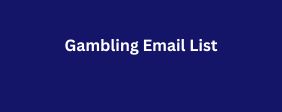Hello hello! How are you? Good? I hope so! Get ready because today I bring you a complete, complete post about Google Data Studio . It turns out that I have been reviewing the posts I have written about Data Studio so far. On some occasions I had already told you about this tool, but I had not yet done a Google Data Studio tutorial as such (ains, Vic… you start the house with the roof). So today I have decided to prepare a tutorial and introductory guide to Google Data Studio to tell you what it is, what it is for and how to use it. I would recommend that you watch the video that accompanies this post , which is where the chicha is. It is a very complete tutorial in which I create a Google Analytics dashboard from scratch so you can see Data Studio in action. Afterwards, if you feel like it, you can read the post for reference.
What is Google Data Studio and what is it for? Getting Started
As you probably know if you follow this blog, Google Data Studio is Google’s free tool for representing and visualizing data in interactive reports . And you may be wondering: what’s all the fuss about painting graphics? But wait there, my friend, Data Studio has a lot to industry email list talk about. The fact is that Data Studio has become the indispensable web analytics tool for 90% of the projects I am working on . And as Google itself indicates, Data Studio allows you to “unlock the power of your data with interactive dashboards and attractive reports that inspire better business decisions.” That is, if you stay on the surface, Data Studio is just a tool for painting graphics. Maybe you’ll use it for a day or two to see what it’s about, you’ll paint two graphs and you’ll say “yes, yes, nice thing, but why do I want this?”
Data Studio Features
The main function of Google Data Studio is to represent your Gambling Email List data in graphs. Now, developing its functions a little more, Data Studio allows you to: Combine multiple data sources in the same report. For example, it allows you to have data from Google Analytics and Google Search Console in the same control panel. Represent your data in a clean and attractive way. Automate the creation of reports, which you can download in PDF. Share your reports with whoever you want by managing privacy options. You decide who can see based on what information. Are you starting to see why I love Google Data Studio so much?







